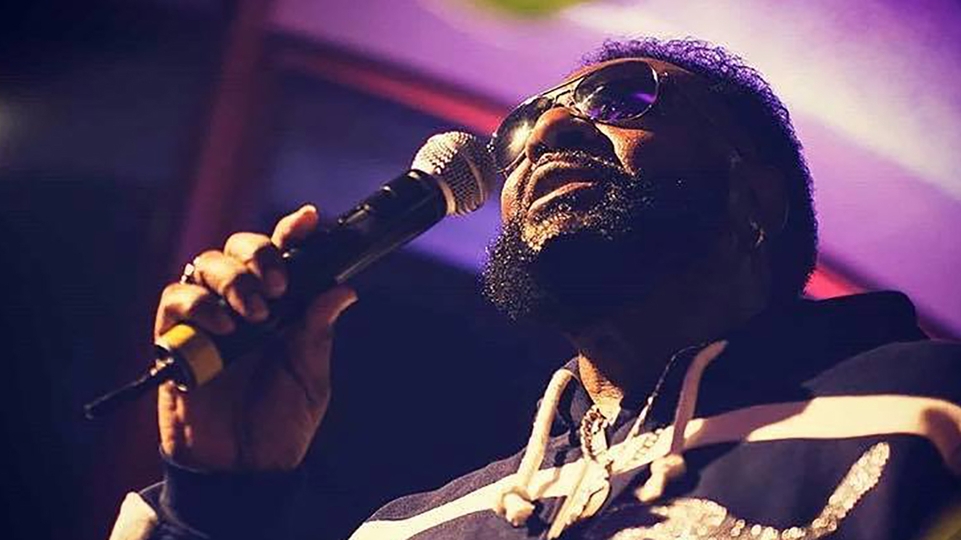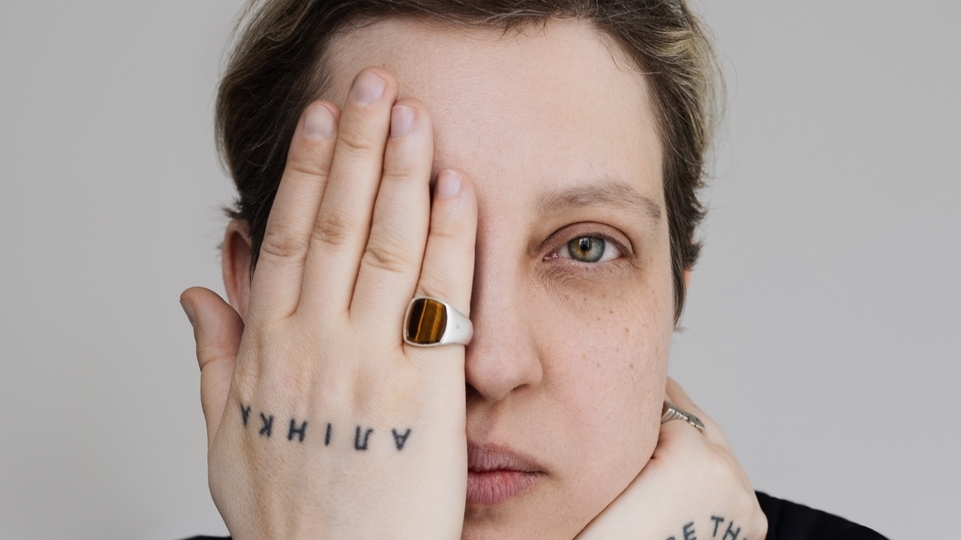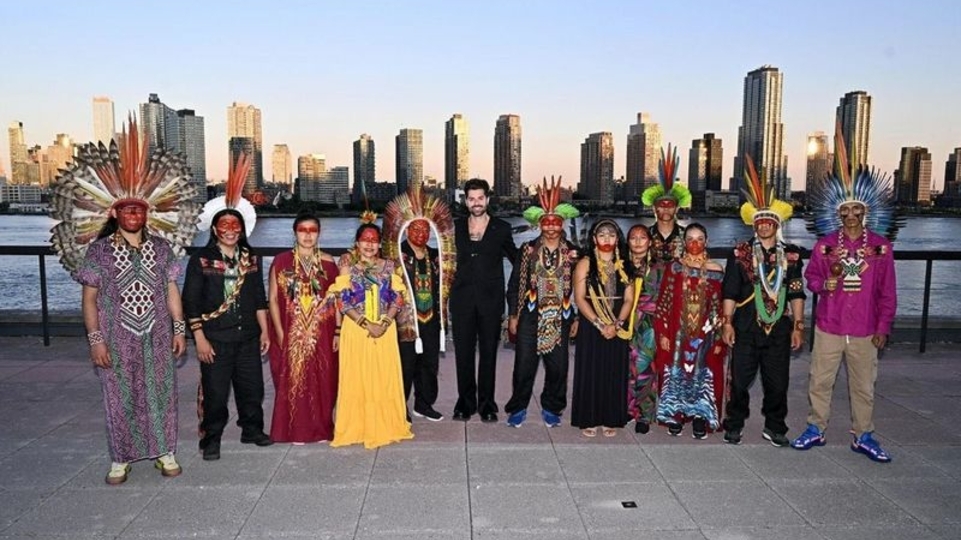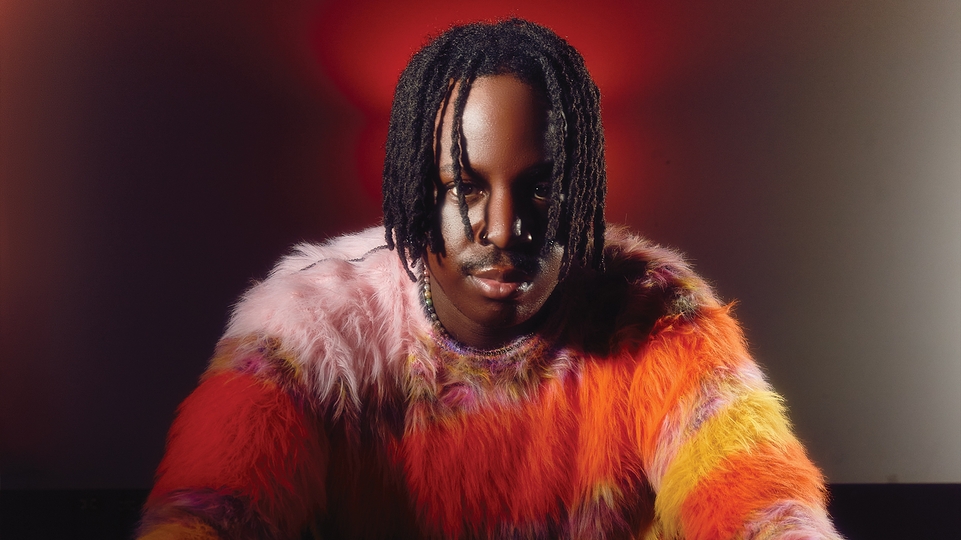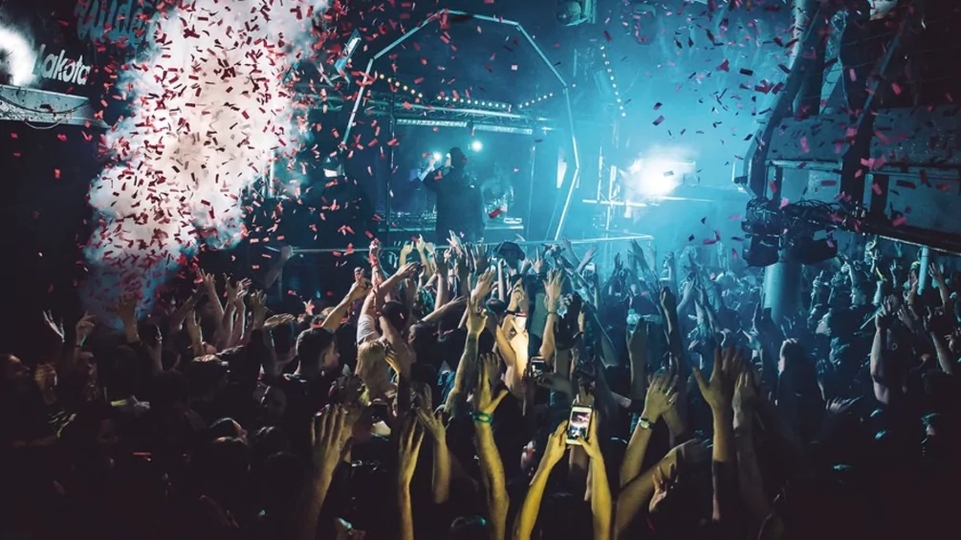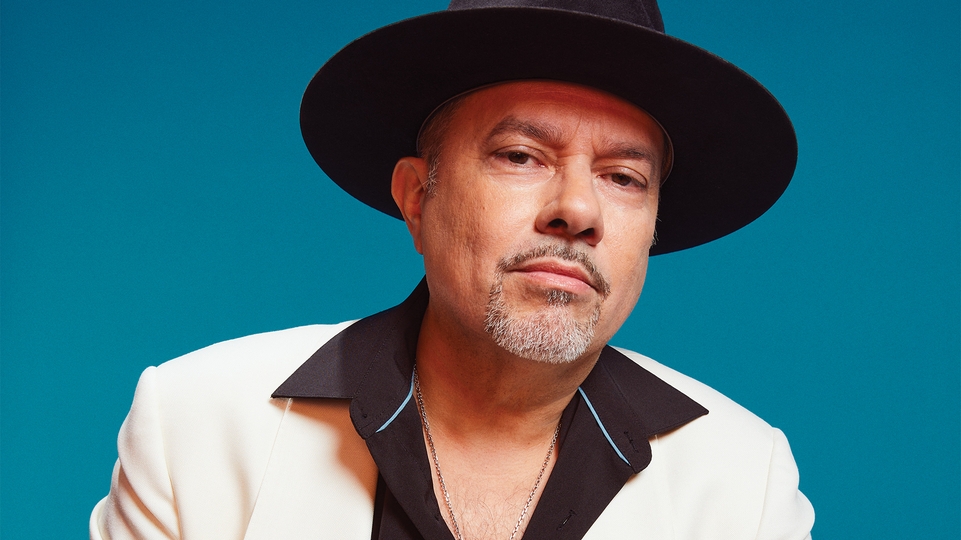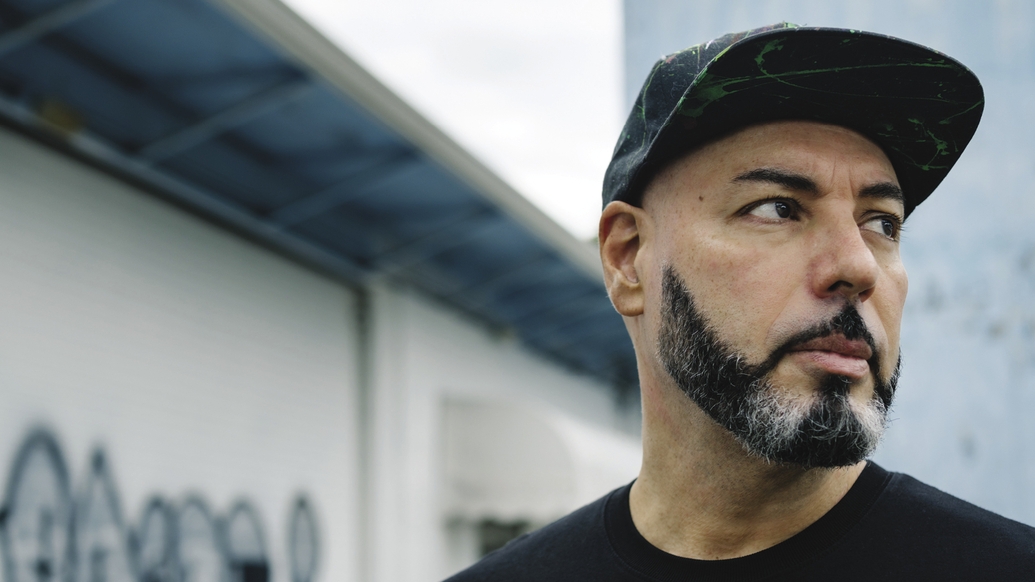
Roger Sanchez: celebrating 20 years of ‘Another Chance’
With three decades as one of house’s biggest names under his belt, Roger Sanchez has seemingly lost none of his enthusiasm for the music that made his name. As he celebrates the 20th anniversary of his enduring hit ‘Another Chance,’ he reflects on his past, looks to his future, and fills us in on how he made the most of his pandemic downtime
On a recent humid evening in Brooklyn, on the rooftop of the Bushwick club Elsewhere, a few hundred revelers let out a collective ‘whoop’ as the familiar form of a beloved New York DJ strode onto the stage. Clad in a black T-shirt and a baseball cap emblazoned with the logo of his Undr The Radr label, Roger Sanchez — who’s lived in Miami for the past few years, but in the minds of many is a New Yorker for life — wasted little time. Ripping into his set, he kicked off with Eats Everything’s rollicking ‘Honey’, then veered between full-throttle chuggers along the lines of Marco Lys’ ‘The Story Continues’ and CamelPhat & Jem Cook’s ‘Rabbit Hole,’ and classics like Ultra Naté’s ‘Free’ and Hatiras’ ‘Spaced Invader’.
New York had fully opened a few weeks earlier; for many revelers, though, this was their first real-world clubbing experience since the pandemic began, and the party had a celebratory edge. But it wasn’t just a triumph for the attendees — Sanchez himself was playing to his hometown crowd for the first time in 17 months. It wasn’t Sanchez’s first gig back since the pandemic imposed — he’d played in Miami, Mexico, LA and elsewhere in recent months — but still, judging from the look on Sanchez’s face, he was savoring a moment of joy.
There’s another factor that might have played a role in Sanchez’s moment of triumph: The Elsewhere gig marked 20 years, nearly to the day, since the release of 2001’s ‘Another Chance,’ the wistful Toto-sampling tune that’s seared into the synapses of pretty much every house head of a certain age. (When Sanchez began mixing into the tune’s clarion-call synth chords late in his set, it received a full-throated cheer.) It’s far from the only inarguable classic in his packed discography, but by the measure of chart success — not to mention fandom adoration — it’s probably the biggest tune of his career.
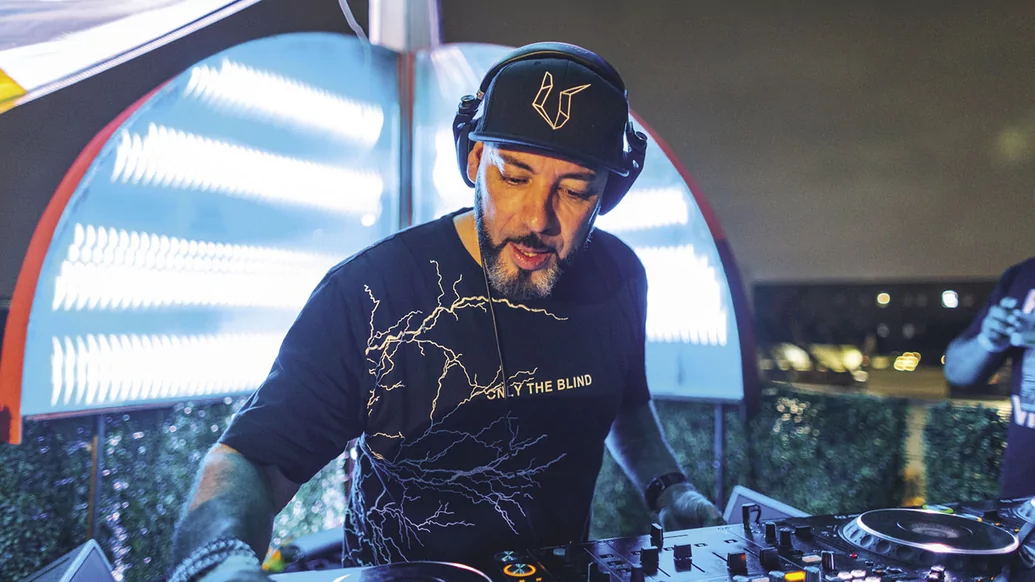

TIME TO STOP
Sanchez, like everyone else, was in a far different headspace in the late winter of 2019. While many of us were surmising — ‘praying’ might be more accurate — that the burgeoning viral crisis would run its course relatively quickly, he had an inkling of what was in store.
“There were a lot of people who thought, ‘okay, two weeks to flatten the curve,’” he says over Zoom from his Miami home, with a brightly-hued work of graffiti art hanging directly behind him. “But I do know a little history, and the pandemic of 1918 was the closest thing to what this was. I had a feeling that this was going to be probably a lot longer than two weeks.”
His steady stream of gigs dried up; there were no festivals to headline, and Ibiza was locked down for the summer. Like almost all DJs, even those with as successful a recording career as Sanchez, the majority of his cash flow comes through live dates, and in the early days of the pandemic, he dealt with his woes the way many of us did. “I ate a lot of Oreos,” he admits.
Those cookies weren’t just taking his mind off impending revenue loss — Sanchez was also going through the kind of withdrawal symptoms that pretty much any performing artist will be able to relate to. “At first, I thought it was just the general isolation of the pandemic that was the hardest part,” he says. “But after the first month of not playing out, I really felt that absence of connection with the crowd, of being in a booth, having the crowd react, and everything that goes with it.”
That feeling of loss even included the less desirable parts of the international touring DJ lifestyle. “As annoying as delayed flights and bad airplane food are, I even missed that,” he says.
It’s safe to say that Sanchez hasn’t reached the upper echelons of the clubbing world by wallowing in sadness when the going gets tough, and he quickly began to strategize. “I go into a very strategic mode whenever I’m faced with challenges, and this was definitely going to be an interesting challenge,” he said. Part of that was dealing with simple matters like keeping food on the table and paying the bills, the same issues anyone who suffers a loss of income faces — but for someone in Sanchez’s position, it was a bit more complicated. “Deposits had to be returned to promoters, and so many things like that,” he says. “It was a lot.”
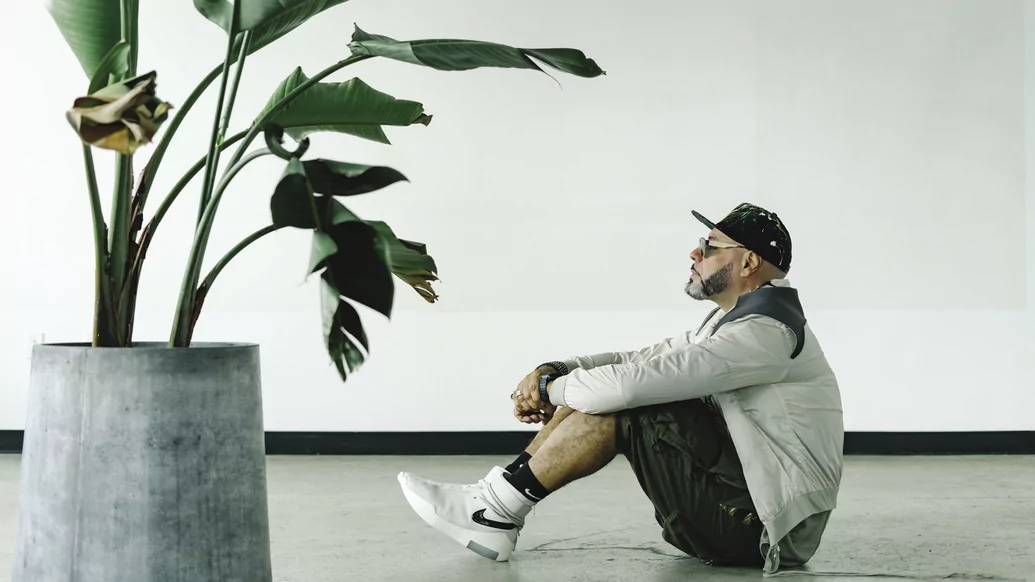
DREAM TIME
Sanchez was, however, suddenly wealthy in something he hadn’t had in ages: Free time.
“I’d been saying that I wish I had time to work on some music, to get me going on a new album,” he says. “And I’ve got some time now.” But first there was a backlog of nuts-and-bolts duties to deal with. Among other behind-the-scenes tasks, he restructured some of his publishing deals, he worked on the release schedule for his labels, and he strengthened his connection with his just-hired management.
“Most managers that I had dealt with, were just mainly interested in taking a commission on DJ gigs,” Sanchez says, in a lament familiar to pretty much any touring artist. “Now that no gigs were on offer, I wanted to find a manager that was actually creative and would sit down and really discuss the vision.”
Sanchez also used the time to rejuvenate his long-running love of graffiti. He had come of age in New York’s B-boy era, and was very much into graffiti as a teenager. “That was very much a big part of my upbringing,” he says, “and I spent a lot of time reconnecting with that. I started doing more artwork, painting more murals and pieces.” It turns out that artwork on the wall behind him — lush and vibrant, with a tropical feel despite its urban roots — is one of his own, a piece titled Home.
There was also planning for the day when the pandemic would recede enough to allow for the return to live DJing. “When we do come out of this, what will I have been doing to maintain connections with my audience?” he recalls asking himself. “I started doing live streams for Twitch, and putting together an intimate following on Patreon, a close-knit circle of fans who get on a Zoom call once a month for performances and masterclasses. I really started multi-faceting on how to approach my connection to the community, and at the same time, my connection with my art and music, and pulling that all together into something very tight-knit.”
There was dealing with the aftermath of those Oreos, too. “When you’re touring, you’re not really able to properly structure your nutrition or your workout time, and the time off gave me the opportunity to get some discipline,” Sanchez says. He dove into yoga and exercise, “and I lost about 36 pounds, which I really needed to do. Which was very difficult! More than anything, it gave me the chance to reevaluate the balance of work and life, and I think I’ll be able to re-prioritize how I approach it now.”
Throughout it all, of course, there’s been music. Sanchez’s most recent release is a collaboration with the UK producer Jacky on ‘What I Mean,’ a bouncy party stomper released on Undr The Radr. His other label, Stealth Records, has been busy as well, with tribal-tinged tunes from Venky, Russian duo Housetronix and Spanish vet Dany Cohiba fresh on the digital shelves. There’s also his series of Secret Weapons releases, one-off tracks he’d originally crafted strictly for his own sets. And then there’s ‘Dream On Me,’ a collaboration between Sanchez and British vocalist (and former X Factor UK contestant) Ella Henderson, released last autumn on Asylum Records. In a nice bit of full-circle fate, the dance- pop song leans heavily on a sample of the swirling synth that runs throughout ‘Another Chance.’
“He could have been so massively insulted we would even touch ‘Another Chance,’” Henderson has admitted in interviews — those fears, apparently, were unwarranted.
“The way that one came about was Ella’s team reached out to me to clear the sample,” Sanchez recalls. “But I really, really liked what she did, so I said, ‘You know what? Let me get a bit more involved in it.’ They asked me to come in and add some production and arrangement touches of my own, and it really meshed well with what she wrote. I really appreciate where she took the track.”
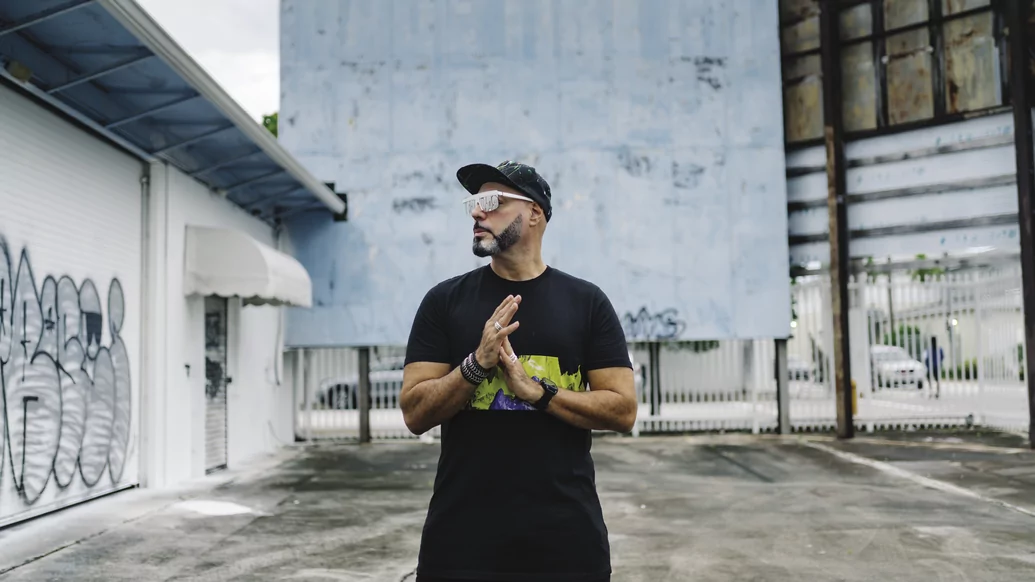

"The ability to play music and kind of understand what’s happening on the dancefloor, and to be able to translate a lot of those elements into my productions, was key. You have to find something that resonates within you, but it also has to resonate with everybody else"
DANCING ABOUT ARCHITECTURE
It’s probably true that Sanchez has always had the mind of a strategist, planning ahead for times both bad and good. But there was also a bit of right-place-right-time luck involved in his trajectory — specifically, it was a case of coming of age in New York City in the culturally fertile ’80s, when music, art, and clubbing intertwined in a bacchanal of creativity.
Sanchez grew up in Corona, Queens, first off 99th Street, close to Jackson Heights, and then a mile or two south, near the Lefrak City complex. “Growing up, I was really into drawing comic book illustrations,” he says, “and graffiti and breakdancing really figured into my early teen years. It was that Zulu Nation period, the whole ’80s birth-of-hip-hop era. I was really entrenched in that world.”
Sanchez attended the High School of Art and Design, which in the past had seen the likes of Calvin Klein, Tony Bennett, and a good number of Andy Warhol’s coterie pass through its halls. By the late ’70s, it was morphing into an epicenter of the emerging B-boy world: Fab Five Freddy graduated in 1977, for instance, and graffiti pioneers such as Tracy 168 and Lee Quiñones attended around the same time. By the time Sanchez got there, it was one of the culture’s hubs. The pioneering producer Kurtis Mantronik was a classmate; so was Pop Master Fabel of the Rock Steady Crew. “And artists like Dondi went there,” Sanchez says, “and Bill Blast and Erni Vales... I’m still friends with Erni, and do artwork with him.” (The two recently collaborated on an animated 3D piece of graffiti-inspired art called Bearbanger, which the pair put on sale as an NFT.)
As the culture infiltrated the downtown Manhattan art and clubbing scene, so did Sanchez’s aspirations. “It was such a creative nexus down there,” he recalls. “The Basquiats and Keith Harings of the world are all from around that time, and Danceteria and those clubs really started to burgeon in that era. As I got older, that was going to be the next transition — straight into that scene.”
First, though, it was time for post-high-school studies, and Sanchez attended Pratt Institute in Brooklyn to study architecture. But the clubbing world was beginning to pull Sanchez from his education. He had already been DJing for years, since he was a young teen.
“One of my friends was a DJ, and I really admired his ability to control and move the crowd,” he says. “One day, he asked me to take over the decks at some house party, and I was hooked. From then, I would start collecting vinyl with the money from odd jobs that I had, working in clothing stores or selling shoes, whatever it was.”
Mobile gigs followed, and by the time Sanchez was at Pratt, he was organizing his own block parties while selling cassette tapes of his mixes on Broadway, using the proceeds to throw more parties in Manhattan. “Which meant paying bar guarantees because nobody drank,” he says, laughing. “Those kids just wanted to dance.”


He never did get that architectural degree. “It literally was the last year where I had a conversation with my dad, who is an engineer,” Sanchez says. “He was very much the taskmaster, making sure that I was on top of my studies throughout my youth. One day, he was like, ‘I see your grades aren’t doing as great when you’re spending a lot of time DJing.’ And then he really surprised me with his take: ‘You know, if you really love this DJing thing, if you’re not really wholeheartedly into architecture, why don’t you spend your time DJing? You never know, you might become the best DJ in the world!’
“That was not the conversation I expected,” he continues, “but it was actually a very pivotal one, because it gave me the psychological permission to follow what was really in my heart. I said, ‘Okay, I’m going to take a year off from school. I’m going to try the DJing thing. I can always go back and finish my last year of college and go be an architect.” Obviously, Sanchez never went back to Pratt, but he’s glad he went — and in an oblique way, he uses the knowledge he picked up in his production technique.
“There’s a direct connection between the concepts of architecture, of how you design space for movement and ingress and egress,” Sanchez explains, “and how the sound in a piece of music moves, as well as to the space that’s in-between those sounds. The elements you add on and take away in different parts of the track correspond to a particular flow. It’s how you structure things to create a kind of impact.”
The idea resonates with Sanchez to the degree where he named one of his tunes after one of his favorite architects — specifically, ‘Zaha Hadid’, a buoyant disco-tech stomper released on Stealth in 2012.
Early in his DJing career, Sanchez secured a regular gig in the intimate (okay, tiny) basement of Mars, a club nestled along the Hudson River on West Street in Manhattan’s Meatpacking District, where he played a mix of early house “and proto-house disco that had a lot of Paradise Garage influences.” He called the night Egotrip. “I even came up with a little logo,” he says. He was beginning to fool around with production on an Atari 1040ST computer, and used the Egotrip moniker (and that logo) on his debut release, 1990’s ‘Dreamworld.’ It was an auspicious beginning: Deep and eerie, boasting a plaintive synth line that floats above a rumbling bass, the track became an unlikely favorite among England’s bleep-techno contingent.
But it was his second release, 1990’s ‘Luv Dancin’, credited to Underground Solution, that sent Sanchez on his skyrocketing trajectory. It was the 20th release on the trailblazing New York house label Strictly Rhythm, founded by Mark Finkelstein and Gladys Pizarro in 1989. With its deep rolling bassline, plaintive keyboard tone and indelible samples — notably the “uno, dos, tres, quatro” from Gil Scott-Heron’s ‘The Bottle’ and, especially, the vocal hook from Loose Joints’ ‘Is It All Over My Face’ — ‘Luv Dancin’’ sounded like little else around at the time. In a 2010 interview, Finkelstein described it as the record that “took Strictly to a whole new level.”
It did the same for Sanchez himself. “That track kicked off such a rush,” he remembers. “I started getting all these requests for remixes, at the same time I was working on all these new tracks for Strictly Rhythm.” This was the era when New York was still formulating its own distinct house sound, separate from the music coming from Chicago or London.
“The city really made its mark in house music during that period of time through people like myself, Todd Terry, Masters At Work, Kerri Chandler, the Burrell Brothers, Frankie Bones, Pal Joey and so many others,” Sanchez says. “All of us, coming out of New York, dropping all of these tracks — we really formed the nucleus of sound coming out of New York in that period.”
Better gigs in bigger clubs, spots like the Limelight and the Tunnel, followed; the Egotrip party moved from the Mars basement to Octagon, where he was now playing to a few thousand on a good weekend. And though he already had a few successful remixes to his name — The Roger S Ego Trip mix of Tribal House’s ‘Mainline’ was one of the first — the major-label offers now started pouring in.“It was, like, Michael Jackson, Janet Jackson, basically all the major artists at that point in time,” he says. “I did Freddie Mercury! It just becomes a blur. I would literally be living in the studio, five or six days a week, with four remixes a month that I had to turn over.”
That’s on top of his DJing, which was beginning to take an international turn. By this time, ‘Luv Dancin’’ had hit in the UK, and a Strictly Rhythm tour with Sanchez and Todd Terry ensued. “That was my first proper tour,” Sanchez says. “I hadn’t really met Todd before then, though I had obviously been collecting his music for years; by this time, he was already an O.G. One of the things with Todd that I’ll never forget is that he literally sat me down and goes, ‘Okay, I'm gonna tell you a couple of things you need to know. You do X, Y, Z — you make this meeting here, pick these tracks, connect with this guy and that guy, do this, do that. And if you do that, you're going to be fine.’ I took that to heart.”
Talk turns to the singular sound that Terry had in those days, that angular, sample-infused style that, like Sanchez, had its roots in B-boy culture. “Getting your own thing — that’s something that takes time to develop,” Sanchez says. “It’s a process of finding your language, which takes a lot of work.” Sanchez, of course, has his own language: “It’s the Latin roots, jazz roots, funk roots, all those factor into my sound,” he says.
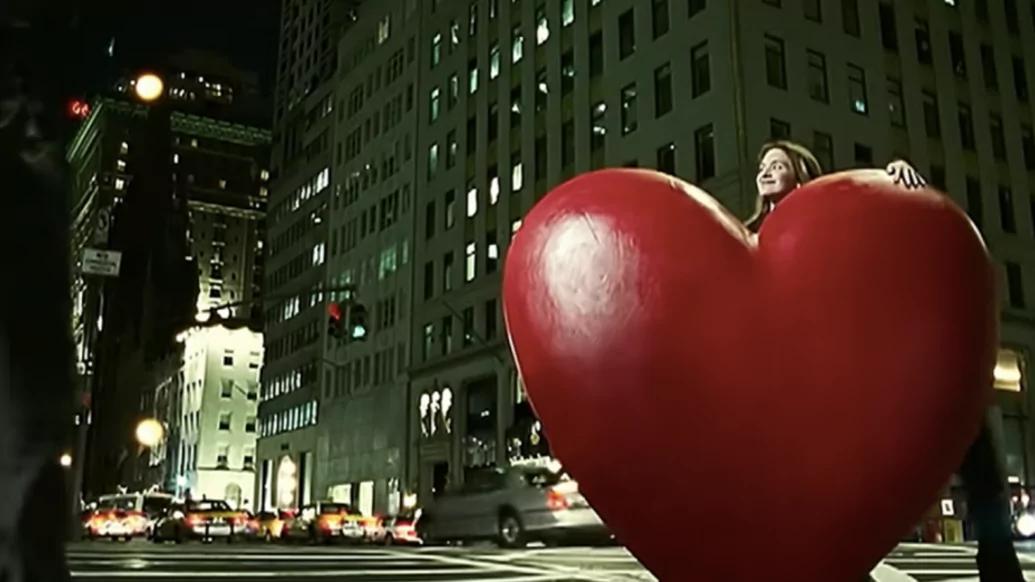
EXPRESS YOURSELF
As was surely the case with Todd Terry and almost any other successful producer you’d care to name, Sanchez’s language didn’t arise out of thin air; plenty of effort was expended in the process of finding it. “I’ve always been a relentless worker,” he says. “When I get into that mode, I just really go hard for it. But the ability to play music and kind of understand what’s happening on the dancefloor, and to be able to translate a lot of those elements into my productions, was key. You have to find something that resonates within you, but it also has to resonate with everybody else.
“And then you have to make the time to actually do it,” he adds. “That’s something that I always tell anyone who asks me, ‘How do I get to do this?’ You have to take the time to apply yourself. You can’t really do it casually.” Sage advice — but then he’s reminded that Armand van Helden, who collaborated with Sanchez on 2001’s bouncy ‘You Can’t Change Me,’ used to brag about how he could pump out a credible house track in a half hour. “Well, Armand’s not exaggerating,” Sanchez says. “He’s the kind of guy who really does not put that much actual effort into it — he’ll be sitting there with a beer, going, ‘Yeah, that’s really good.’ And I’d be thinking, ‘you son of a bitch, it really is really good.’ I’ll be sitting there forever going, ‘I gotta get this snare right,’ and he just does it. There’s a freedom in that. It’s almost like a Jackson Pollack approach to music, just splattering paint on a canvas — but there’s something about the way that paint splatters that’s genius.”
‘You Can’t Change Me,’ off of Sanchez’s debut album, ‘First Contact,’ did well, but its success pales in comparison with that same LP’s ‘Another Chance.’ The tune is based around a plaintive vocal hook, sampled from Toto’s ’83 track ‘I Won’t Hold You Back’: “If I had another chance tonight, I’d try to tell you that the things we had were right.” Sanchez is the first to admit the success of the track — which reached the Number One slot in the UK, charted well throughout Europe and, for a few months, was pretty much inescapable here in the US — was as much the result of alchemic magic as it was hard work. “Yeah, there was a bit of kismet with ‘Another Chance,’” he admits. “It was one of the last tracks I did on the album. The thinking was that, ‘okay, the album is almost done — but it needs a good underground track.’ That’s literally all that went into it.”
Sanchez had picked up the Toto record at a vintage vinyl shop in Montreal. “As I was going through sampling ideas, I came across that vocal hook," he says. "The song itself is a real ballady type of thing — but lyrically, ‘If I had another chance tonight’ just really connected with me. I started taking the chords, chopping them up, layering more chords over it but using that hook as the anchor. As I kept going, adding all these elements, it felt really emotional to me. But still, I had no idea of how much it would connect with people, or any indicator of the magnitude of the track. I just knew that it made me feel something.”
The album was released by Defected in the UK, and Sanchez credits Defected head honcho Simon Dunmore for seeing the tune’s potential. “When he heard ‘Another Chance,’ he said, ‘That’s the track. That’s the one we’re going to go with.’ I was like, ‘okay, fine, cool.’ That was it — I really had no idea what would happen.” He soon found out. “I remember having the test pressing, and playing at Pacha in Piccadilly Circus in London. And right after I play the track, five different girls came up: ‘What was that record?’ And then that would happen at literally every gig that I would play. I was thinking, ‘this could be the big one!’ After it was officially released, Simon called and said, ‘I have some news for you — ‘Another Chance’ is going to be Number One this weekend.’ I was like, ‘whoa.’”
By this point, Sanchez had long been part of the superstar-DJ contingent, but still he wasn’t quite prepared for the onslaught of attention that pop success brings. “It was like in Star Wars when you press the hyperspace button, and all of a sudden the stars are just turning to flashing white-light streaks,” he says, still excited by the rush. “It was a far different thing than what I was used to. There was a seriously intensive press tour in the UK, of the kind that I had never done: Every morning, 6am, to go do radio press, TV press, morning shows... doing shows like Top Of The Pops, being interviewed on the BBC and Channel 4 and newspapers, all this really upfront mainstream stuff. It was pretty surreal.
“Oh, and that’s when I had my first DJ Mag cover!” Sanchez adds. (The writer of that piece describes Sanchez thusly: “He might look like a cross between Ricky Martin and Ali G, but close up Sanchez oozes New York cool.”) “Before then, I used to travel fairly incognito,” he says, “but, suddenly, there’d be people going, ‘That’s Roger Sanchez!’ That was really weird.”
From that time on — in truth, long before then — Sanchez’s path has seemingly been on cruise control. But needless to say, there have been times both good and bad throughout his career. Right before ‘Another Chance’ broke, a manager and good friend passed away; later, he went through a difficult lawsuit with another manager, “which gave me a lot of insight as to things that I need to be aware of from the business aspect of things,” he says. “And I’ve gone through divorce, which is almost an unfortunate inevitable in this field. Not every relationship is going to survive.”
There have been other difficulties, both public and private, most of which he’s reluctant to discuss. “But every single difficult thing that has happened to me has been a lesson, and I’ve had to learn a lot of lessons,” he says. “I think that’s what creates the kind of tapestry of a real life.”
Through it all, Sanchez has managed to keep one foot in the underground (through those Secret Weapons releases, for instance) and another in the mainstream, via pop-oriented material such as ‘Dream On Me.’
“That’s something that an artist struggles with sometimes,” he says, “especially when you come from a very kind of cool or underground sphere, but you’ve reached a certain measure of success. But I’ve gotten to the point where I feel comfortable expressing myself, regardless of expectation. If I’m doing a major-label album, or producing a song for an artist that’s a crossover thing, I know where to tap into my spectrum. Or if I just want to create these beats to drop in my set, I know where I can tap into on that, too.”
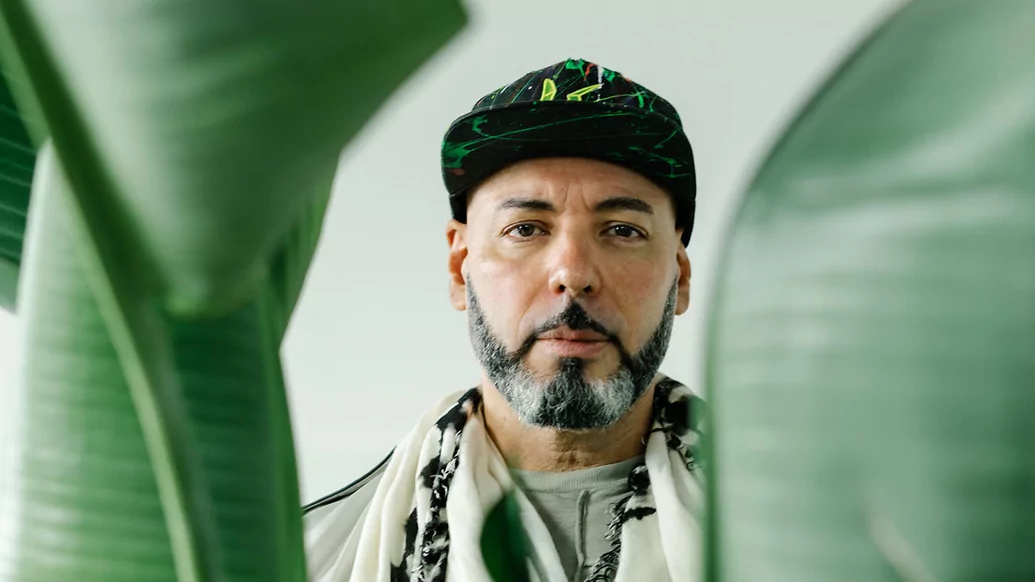

PASSION PROJECTS
Given that it’s the anniversary of one of his biggest tunes, it’s not surprising that Sanchez is in a somewhat nostalgic mood. The conversation turns to some of his most memorable gigs. There was that time in 2003, for instance, where he played in front of the biggest crowd of his life at Berlin’s Love Parade. “I’d played to thousands of people — but this was 1.2 million people, with me literally at the center,” he says. “I mean, it was only a 15-minute set, but it was intense.” There was the 2008 closing party of his long-running Release Yourself throwdown at Pacha in Ibiza, and a date a few years back at Tokyo’s Womb, and an 18-hour set in a rainy Miami.
“There was a lake that had formed in the middle of everything,” Sanchez recalls, “and people were still dancing and splashing around in the middle of it at five o’clock in the afternoon. I’m like, ‘holy crap!’ But it shows the dedication and connection of music people, and how, when you’re really connected on that level, it supersedes anything.”
There’s only a limited time for reminiscing, however — Sanchez is as busy as he’s been since those heady days of the early ’90s. There are his two labels to run, and he’s currently heading up a pair of podcasts: the Release Yourself mix series, and an interview show called The Hustle, featuring Sanchez in conversation with major-league contemporaries such as Claude VonStroke and Fatboy Slim. (“My Joe Rogen imitation!,” he jokes.) He’s in the songwriting stage of a new album. And, of course, there’s DJing: Covid-19 willing, he’s got a packed schedule for the rest of the summer, one that’ll be taking him to the UK, Croatia, France, Spain, and beyond.
But there’s one item on his agenda he seems particularly excited about. “It’s what I call my ‘car-building project,’ like one of those passion projects that a guy spends 10 years on, rebuilding an engine block in his garage,” he says with a laugh. The endeavor combines his love of architecture and music. “I’m taking 12 architects,” he explains, “and creating pieces of music based on my interpretation of their style of architecture, a kind of audio-visual concept piece. This is something that I’ve been kind of putting together in the background, taking root in my head and growing, wrestling with it for years. But I think I’m kind of finally wrapping my head around how I want to proceed.”
According to Sanchez, it’s another step in his lifelong quest for fulfillment. “I think the most important thing is to constantly stay creative,” he says. “I really am very much looking forward to how we develop the industry in the future: How blockchain is going to affect it, how technology’s gonna affect it, and all that, but at the same time maintaining a real core root of humanity and personally remaining honest as an artist. That honesty is one of the things that I really always strive for in everything that I do, whether it’s music, DJing, graffiti, or whatever. I’m blessed to be able to do that.” The rest of us are blessed that he's able to do it, too.

